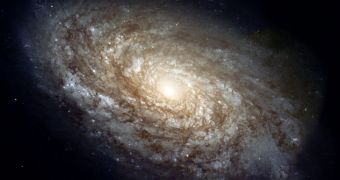A team of astronomers from the United States published a new study detailing how the Universe was seeded with heavy metals such as iron. According to their research, this series of events occurred around 10 billion years ago, when the Universe was less than a third of its current age.
One of the most important discoveries the team made was that exploding stars, such as supernovae, and black holes were largely responsible for putting heavy metals into all galaxies.
The study was conducted on one of the largest structures in the Universe, the Perseus Cluster (Abell 426 or NGC 1275), using data collected by the Japanese-US Suzaku satellite.
A total of 84 sets of X-ray telescope observations were included in the new paper, which appears in the October 31 issue of the top scientific journal Nature. What the team found was that iron is distributed uniformly throughout the 190 galaxies making up this massive cluster.
The findings lend additional credence to theories suggesting that the Universe had a very turbulent and violent youth, about 10 billion years ago. Without this period, the development of life on Earth would have been impossible.
The study was conducted by experts at the Kavli Institute for Particle Astrophysics and Cosmology (KIPAC), which is a collaboration between the Department of Energy’s SLAC National Accelerator Laboratory and Stanford University.
The main implication of these observations is that iron and other heavy metals existed in intergalactic gas long before the Perseus cluster started forming. Most likely, the chemicals were produced by billions of exploding massive stars, which formed soon after the Big Bang.
Each of these short-lived stars was, in essence, a reactor for fusing lighter elements into heavier ones. The same period is believed to have produced the most energetic black holes at the core of active galaxies.
“The combined energy of these cosmic phenomena must have been strong enough to expel most of the metals from the galaxies at early times and to enrich and mix the intergalactic gas,” explains Ondrej Urban, a KIPAC graduate student and co-author of the paper. The lead author on the paper was KIPAC astrophysicist Norbert Werner.
During the study, the team was also able to calculate that the mass of the iron present in the Perseus Cluster is equal to that of around 50 billion suns. “You are older than you think – or at least, some of the iron in your blood is older, formed in galaxies millions of light years away and billions of years ago,” adds Japanese Aerospace Exploration Agency (JAXA) International Top Young Fellow Aurora Simionescu, a co-author of the study, and a former member of the KIPAC team.

 14 DAY TRIAL //
14 DAY TRIAL //